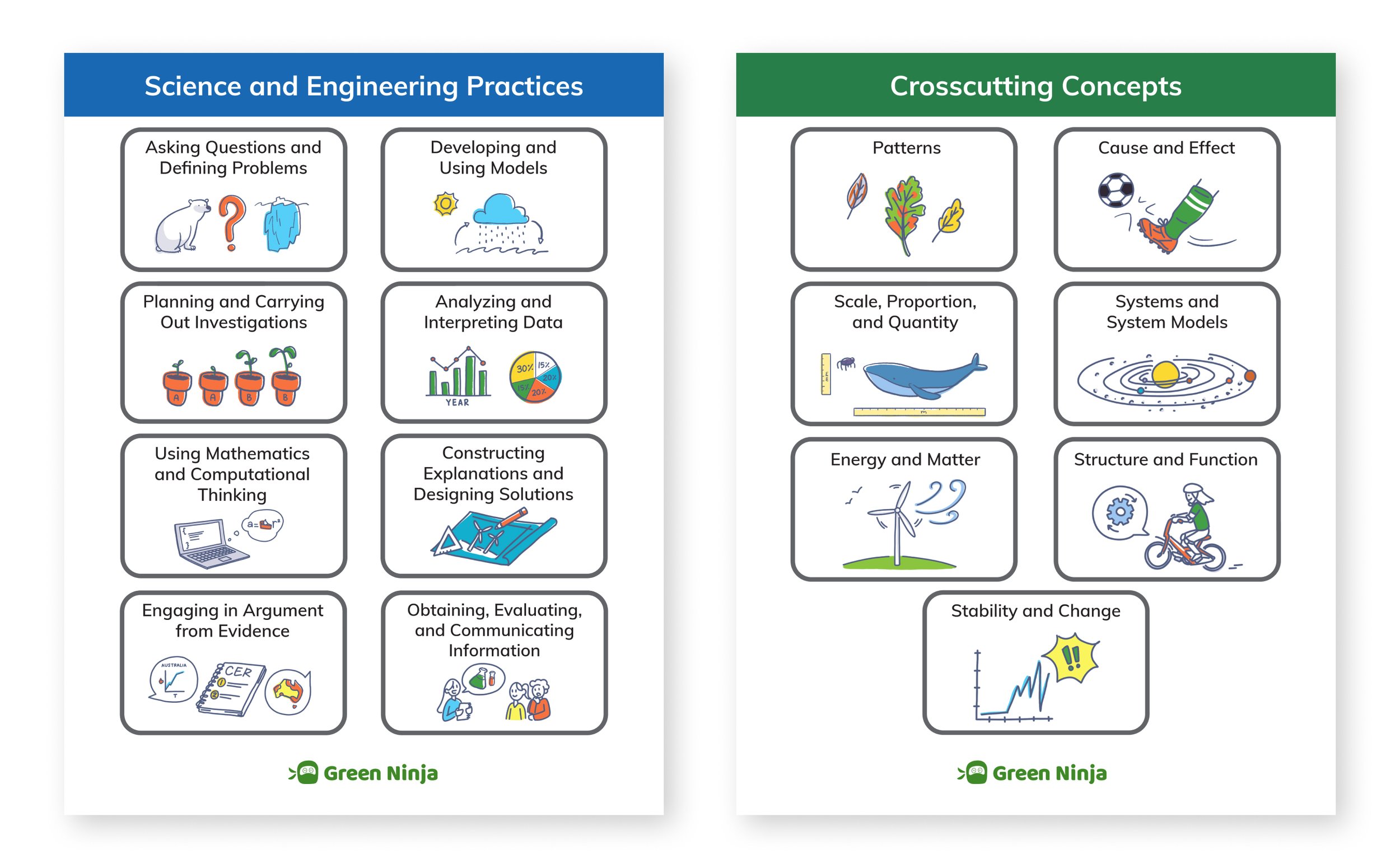How to Prepare Your 5th & 8th Grade Students for the 2024 New York State Science Tests

In 2024, New York is shifting to new science tests aligned with the Next Generation Science Standards (NGSS) for grades 5 and 8. These tests are cumulative, assessing grades 3-5 standards in 5th grade and grades 6-8 standards in 8th grade.
What’s New in the 2024 Tests
- Computer-based format with technology-enhanced items (drag-and-drop, adjusting graphs, etc.)
- Emphasis on applying NGSS science and engineering practices and crosscutting concepts
- Item clusters based on real-world phenomena students likely haven’t encountered before
- The state handles all scoring centrally
General Strategies to Prepare Students

- Emphasize Science and Engineering Practices and Crosscutting Concepts: Focus on NGSS practices and crosscutting concepts, not just content. The new NY state science tests heavily emphasize these, with about two-thirds of the points coming from their application. Provide frequent opportunities for students to employ these practices and recognize crosscutting concepts in varied contexts.
- Engage Students in Figuring Out Science Ideas: Incorporate regular hands-on investigations and sense-making of phenomena. Students should “figure out” rather than just “learn about” science ideas. Anchor instruction in real-world phenomena that spark questions. Have them conduct investigations and analyze data to construct explanations. Dedicate the bulk of time to hands-on explorations, discussions, and sense-making.
- Familiarize Students with the Digital Test Format: Starting in 2024, the NY state science tests will be administered on a computer. Students need to practice with digital tools like drag-and-drop, drop-down menus, text highlighting, graphing tools, and equation editors. Incorporate digital interactives, simulations, and practice test items into regular instruction.
- Have Students Work Together on Sample Questions: Have small groups of students collaborate on practice test items released by the New York State Education Department. This introduces them to the language and expectations of the test. For 8th grade, start with the 5th grade sampler questions before tackling the more advanced ones.
- Examine the Required State Hands-On Labs: Use the required state hands-on investigations as examples of 3-D learning. Analyze these labs to see how they integrate specific science and engineering practices, crosscutting concepts, and disciplinary core ideas. Apply those same three dimensions to other science units. Unpacking the labs provides insight into the interconnected model of learning expected on the tests.
Specific Strategies for NGSS Practices
- Develop and Use Science Models: Developing and using models is a key NGSS practice assessed in multiple ways on the new NY state science tests. Students may be asked to draw models, create physical replicas, identify components of given models, or manipulate digital models. Provide regular opportunities to create and revise models of systems and processes. Practice the specific modeling tools on the test, like dragging and dropping labels onto model components.
- Use Phenomena to Drive Learning: Center lessons around phenomena for students to explain. Each test item cluster will focus on a specific real-world phenomenon. Mimic this by anchoring units in observable occurrences. Have students ask questions about the phenomenon, then conduct investigations to construct evidence-based explanations. The practices of asking questions, planning investigations, and constructing explanations should be used in tandem.
- Incorporate Data Literacy Skills: Practice reading data tables and analyzing data. The new tests heavily emphasize data literacy, especially at the elementary level. Provide frequent opportunities to read data tables, spot patterns and trends, and use evidence to support claims. Practice translating between data tables and graphs. Have students explain what a data table shows and use it to justify predictions or conclusions.
- Engage in Scientific Argumentation: Engage students in argumentation from evidence, a core practice assessed on the tests. Give students scientific scenarios and have them state claims, supply relevant evidence, and provide reasoning to link the two. The Claim-Evidence-Reasoning (CER) framework is helpful. Have students critique claims and evidence to determine which is best supported. Argumentation can be done in writing, discussions, or both.
How Administrators Can Support Teachers
- Allot Adequate Time for Science: Ensure adequate time for science, especially in elementary grades. With the increased emphasis on NGSS-aligned science learning, administrators must prioritize time for it in the master schedule. In grades 3-5, research suggests a minimum of 2-3 hours per week for students to engage in practices and build conceptual understanding. More is better. Communicate the importance of science to staff and families.
- Provide NGSS and 3-D Assessment Professional Development: To effectively implement three-dimensional standards and prepare students for the new state tests, ongoing professional learning is essential. Administrators should contract with experts to provide training on NGSS pedagogy and assessment practices. Importantly, ensure that teachers have collaborative work time to apply their learning to lesson design and student work analysis.
- Budget for Hands-On Materials: Secure materials for hands-on investigations. Three-dimensional, phenomena-based science requires materials for investigations and sense-making. Administrators must budget for startup costs for permanent equipment like digital scales and microscopes, as well as yearly consumables like chemicals, specimens, and building supplies. Consider purchasing commercial kits to save teacher prep time, but ensure they are truly aligned to NGSS.
- Create Consistent Science Schedules: Maintain consistent daily science time with the same teacher. Students need dedicated, daily science instruction to build skills and knowledge over time. Ideally, the same teacher should teach science all year to develop rapport and monitor student growth. At the elementary level, if departmentalization is not possible, ensure that teachers have science content training and accountability for teaching it well. At higher grades, avoid having multiple teachers teach different science units to the same students.
Green Ninja is a great resource for teachers seeking to prepare their students for the new 2024 New York state science tests. Green Ninja integrates phenomena from students’ everyday lives in a project-based approach with hands-on activities, flexible instructional tools, and embedded assessments to fully engage them in an authentic science experience.



